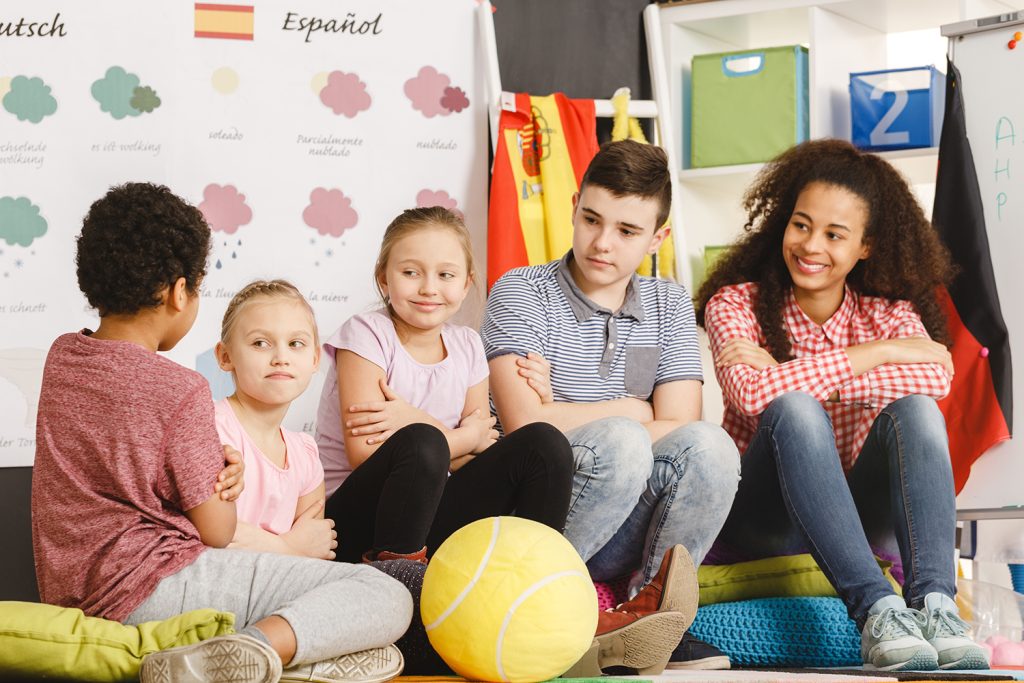Being informed is empowering. For both educators and researchers, being informed allows us to make decisions with confidence and to participate in professional communities with discernment. Nobody disputes the importance of being informed. The question is: who should be informed of what? When it comes to the relationship between second language acquisition (SLA) research and pedagogy, we think of research informing practice more often than the other way around. It is important that practice inform research as much as research informs practice.
What exactly is research-informed pedagogy?
The term research-informed has become as overused and misinterpreted as the label communicative, so let me start by addressing what I do not mean by it.
I do not mean justifying practices based on cherry-picked studies. We should think of results as clues to be interpreted in context, as opposed to directives to be followed without question. I also do not mean relying only on the latest publications. While it is true that research continually gives us clues that confirm, question, or add to what we know so far, we should not discount the contributions of an article based solely on when it was published. Some ideas do not have expiration dates. Last but not least, I do not mean dogmatically following any particular scholar to the point of dismissing the ideas of anyone with a different name. Our teaching should be guided by fundamental principles of SLA, not famous people in SLA.
What I mean by research-informed is a principled approach where we can justify why we do what we do while understanding what “research shows,” what it has not shown yet, and what it might not ever be able to show. I put “research shows” in quotation marks because it is another phrase that needs some dissection. As soon as I hear someone say “research shows,” I immediately wonder: what research? Published research is inevitably biased. Not everything that has been researched has been published, not everything that should get published is published, and it is debatable whether everything that gets published should be published. The second question that comes to mind is: what does it really show? Research shows our own interpretation(s) of the data. Two scholars can look at the same results and see various degrees of support for different conclusions.
A third question is warranted when the phrase “research shows” comes up in the context of which practices are most beneficial or effective: for what? The research-backed benefits of instructional interventions are dependent on what we are measuring, as well as what we are not measuring. Above all, is that what we want to know? For example, if a study shows “benefits” of a particular instructional method when it comes to accuracy on a grammaticality judgement test, how useful would those findings be for your own instructional goals? Personally, I am interested in “benefits” that are measured by unassisted performance on communicative tasks, as opposed to mastering forms in isolation.
Who informs whom?
The main concern has been and continues to be about helping teachers apply research findings in the classroom. Ellis (1997) pointed out the shortcomings of expecting teachers to do as researchers say with little regard to context. Even if we agree that “it is only when [teachers] have tried out some of the pedagogical applications suggested by SLA research that they will understand what it really means for their own teaching context” (Lightbown, 2003, p. 10), going from “do as we say” to “try what we say” does not fully address what happens after teachers have tried out what researchers say. At what point does practice inform research? Bridging the infamous gap should entail movement from both sides.
A consequence of prolonged unidirectional communication is that, at some point, everyone feels unheard. On the one hand, researchers become frustrated when practice appears to ignore decades of research. On the other hand, teachers feel alienated when their practical concerns do not seem to be a priority to researchers. The chasm widens as each side dismisses the other on the basis of being uninformed (i.e., “teachers don’t know the research,” “researchers don’t know what happens in the classroom”). Even the false dichotomy of relying on “experience” versus “research” to guide pedagogical decisions highlights how divided we are. A teacher’s experience in the classroom should not be discounted as a source of information to make pedagogical decisions, just like decades of research should not be dismissed as being something applicable only under ideal conditions.
Part of the frustration from both sides possibly stems from expectations that remain perpetually unmet. What exactly is the effect we are expecting research to have on classroom practice? And how fast? Being aware of research might be the catalyst for reflection, and it may not always translate into tangible, immediate changes to our practice. By the same token, teachers’ expectations of research also need some adjustment. The instructional context and conditions under which studies are carried out will likely never be identical to our own classrooms. We should balance caution and curiosity as we inform ourselves of what “research shows.”
How can we go from dismissing to dialoguing?
Making findings accessible through summaries like those in the OASIS database (Marsden et al., 2018) is indeed needed, but I would suggest going a few steps further. We need greater acceptance of new formats and venues. Writing 5,000–8,000 words does not make one’s ideas more valuable. The mold is hard to break, but I know I am not the first to question the hierarchical ranking of discourses we have come to accept. Will uploading a video on YouTube ever be considered as significant a contribution as presenting at an academic conference?
Another desperately needed change in perceptions has to do with the unfounded stigma of action-based research being less “serious” than other types of research. This issue is not new or exclusive to SLA (Stewart, 2006), but it is certainly long overdue for addressing in our field. Studies focused on student performance in the classroom, as opposed to acquisition (the Holy Grail), should be accepted as equally rigorous and important as psycholinguistic or laboratory studies. Practical applications are as valuable as theoretical implications.
In addition to these two shifts in perception, there are a number of concrete ways in which we can go from dismissing to dialoguing, including but not limited to:
• Classroom-based studies co-created and co-authored by researchers and teachers. The classroom should not be merely a data collection site but rather should inform multiple aspects of the research design, especially the assessment measures.
• Incorporating the topic of action research within language teacher education programs. Madel (2021) outlines a series of steps to encourage educators to conduct research themselves and thus debunk the myth “that SLA research is beyond reach for the classroom practitioner and only reserved for those in academic settings” (Madel, 2021, p. 35).
• Podcasts by teachers and for teachers, where research findings are discussed and researchers are interviewed. Some current examples of this idea are the Motivated Classroom podcast, hosted by Liam Printer, and the World Language Classroom podcast, hosted by Joshua Cabral.
• Videocasts that connect the dots between SLA research and teaching. A great example of this idea was the series Musicuentos Black Box a few years ago. Currently, my own YouTube channel, “Unpacking Language Pedagogy,” provides videos with concise yet contextualized summaries of articles that address issues directly relevant to the classroom. Steve Smith’s YouTube channel also features short screencast presentations about various aspects of second language learning and teaching, called “Continuing Professional Development (CPD).”
All in all, the relationship between SLA research and pedagogy should emulate two key aspects of two-way information-gap tasks. First, each interlocutor has information that the other one needs. Teachers and researchers need to understand each other’s contexts and engage in a purposeful exchange of information.
Second, everyone is working toward the same concrete outcome. In the words of Pica (1994), “as teachers and researchers, we cannot work in isolation from each other if we are to help our students meet their needs and accomplish their goals” (p. 49). Indeed, the students’ success is our common goal.
References
Ellis, R. (1997). “SLA and Language Pedagogy: An educational perspective.” Studies in Second Language Acquisition, 19(1), 69–92.
Lightbown, P. (2003). “SLA Research in the Classroom/SLA Research for the Classroom.” Language Learning Journal, 28(1), 4–13.
Madel, R. (2021). “Classroom Teachers’ Role in Bridging the Research Gap in SLA: A guide for conducting classroom research.” Pennsylvania Language Forum, 92, 30–45.
Marsden, E., Alferink, I., Andringa, S., Bolibaugh, C., Collins, L, Jackson, C., Kasprowicz, R., O’Reilly, D., Plonsky, L. (2018). Open Accessible Summaries in Language Studies (OASIS) [database]. www.oasis-database.org
Pica, T. (1994). “Questions from the Language Classroom: Research perspectives.” TESOL Quarterly 28(1), 49–79.
Stewart, T. (2006). “Teacher–Researcher Collaboration or Teachers’ Research.” TESOL Quarterly, 40(2), 421–429.
Dr. Florencia Henshaw is the director of advanced Spanish at the University of Illinois, Urbana-Champaign. She is an award-winning educator who has published and presented nationally and internationally on various topics related to language pedagogy. Her upcoming book, Common Ground: Second Language Acquisition Theory Goes to the Classroom (co-authored with Maris Hawkins), aims to help educators visualize how to put principles into action.



















